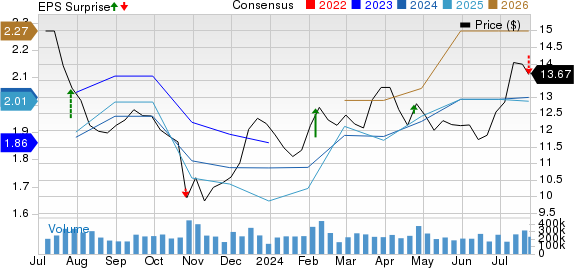I’m thrilled to welcome you to the first LatAm Tech Weekly of 2024. This week’s edition is a bit special – I’m diving into an insightful analysis I came across recently, which sheds light on what we can anticipate in the venture market this year.
But before we jump into that, let me give you a quick recap of my whirlwind 2023. And don’t worry, we’ll return to our regular format next week. Stay tuned!
Reflecting on the past year, here’s a snapshot of my journey and achievements:
-
Crafted 48 editions of the LatAm Tech Weekly newsletter
-
Highlighted 38 incredible ‘Startups to Watch’
-
Wrote a whopping 65,000 characters solely on Substack. To put that in perspective, that’s more content than a 200-page book!
-
Made waves in the media with 14 mentions across various news outlets.
-
Ventured into the world of audio and video, participating in 19 podcasts and videos.
-
Connected with the community through 28 live events as panelist.
-
+16,000 followers on LinkedIn and +12,000 followers on Instagram.
It’s been a year of growth, learning, and connecting, and I’m excited to carry this momentum forward!
A Reflection on the Past
As I highlighted in our last edition, understanding the past is key to navigating the future of the VC industry. To that end, CB Insights recently published its State of Venture 2023 report, complete with Q4 data, and the findings are quite telling.
The report underscores a trend of ongoing market uncertainty and investor wariness, which culminated in a significant dip in venture deal activity. The last quarter of 2023 marked a 7-year low in the overall number of venture deals. The U.S., in particular, felt the brunt of this slowdown, with its quarterly deal count falling to a 10-year low, at just 2,182 deals. However, amidst this slowdown, there’s a noteworthy shift: investors are increasingly focusing on early-stage investments. In fact, about two-thirds of all deals were in the early stages. This, of course, implies that securing mid- and later-stage deals has become more challenging.
This pivot in investment strategy offers a glimpse into the evolving dynamics of the venture capital landscape as we step further into the year.
Exploring the Landscape of Private Investment in 2024

Gauging the Landscape
As the private investment realm grapples with fluctuations, Latin America registered a year-end funding of USD 3.3bn in 2023, in contrast to USD 7.5bn in 2022. Early-stage investments commanded a striking 83% of the rounds, with Brazilian firms QI Tech and Jusbrasil making waves in Q4.

Predictions for the Future
Pitchbook’s analysis reveals that private investment managers are hopeful for brighter days ahead, confronting obstacles such as poor fund distributions and high interest rates. The arduous exit environment has translated to diminished returns for both Private Equity and Venture Capital investors, leading Limited Partners to curtail funds for new investments. Nonetheless, a cautiously optimistic outlook looms for 2024.
Pitchbook’s projections outline three key trends for the upcoming year:
- Anticipated breakneck growth with over 100 exit transactions featuring continuation funds.
- Private Equity firms may extend holding periods, possibly surpassing the current median of 6.4 years.
- Venture Capital is expected to witness a modest rise in total fundraising compared to 2020.

Delving into the Details
The 2024 U.S. VC Outlook by Pitchbook provides a comprehensive overview of the venture capital landscape, with a keen focus on fundraising, IPOs, and late-stage dealmaking. With 2023 concluding, promising signs indicate a potential resurgence in the IPO market. The robust performance of the U.S. economy, recording a notable GDP growth of 5.2% in Q3, has assuaged concerns over a looming recession. The Federal Reserve’s cessation of interest rate hikes since July 2023 has rekindled interest in public stocks, with the S&P 500 scaling a 19% surge in 2023. Evidently, if inflation remains subdued, the prospects for further rate cuts in 2024 are favorable. Additionally, the abatement of supply chain disruptions from the pandemic has resulted in a drop in the Global Supply Chain Pressure Index. Notably, these improvements, particularly advantageous for shipping and semiconductor companies, could optimize operational efficacy and yield enhancement. Consequently, the enhanced production capabilities may diminish uncertainties for startups, potentially invigorating the IPO market as they become more appealing.

The market volatility, gauged by the Cboe Volatility Index (VIX), is currently on a downward trajectory at approximately 13, below the enduring median of 18. This waning volatility could instigate a surge in IPO filings for 2024, fostering a stable market milieu conducive to issuers and investors alike. VC-backed startups may find this stability advantageous for their public debut, mitigating risks for investors by minimizing concerns about abrupt market changes. Furthermore, the discerning criteria for going public in 2024, favoring highly profitable startups, may constrain the number of eligible VC-backed companies for IPOs. Nevertheless, a resurgence of selected VC-backed companies’ IPOs remains plausible.

In 2023, capital distribution from exits to investors hit its lowest ebb since 2003, dwindling to a mere $54.8 billion from approximately 900 exits, marking a 30% decline from 2022. This downturn primarily stemmed from a substantial dip in tech IPOs and heightened SEC regulations impacting alternative exits like acquisitions. The distribution rate for VC funds aged five to 10 years also plunged to a decade low. Despite this, the future fundraising estimate hovers around $64 billion, akin to 2020 figures but below the zenith of 2022.
The venture market grapples with challenges, such as underperformance of tech unicorns and heightened selectivity by VC firms, culminating in a capital demand-to-supply imbalance favoring investors. Nevertheless, macroeconomic shifts and Federal Reserve policies could reignite interest in riskier investments, potentially revitalizing fundraising prospects and aggrandizing exit opportunities in 2024.
The Impact of Insider-Led Deals on US Venture Capital Sector
Riding the Insider Wave
The wave of insider-led deals within the US venture capital (VC) sector shows no signs of receding, a trend anticipated to persist through the first half of the year. A confluence of ongoing capital constraints, sustained market volatility, and dwindling investor confidence, together with a lack of reopened exit channels, has been instrumental in driving this phenomenon. Compounding the issue is the decreased dealmaking pace of US General Partners (GPs) since mid-2022. Simultaneously, institutional Limited Partners (LPs) have grappled with liquidity issues, partly due to the denominator effect impacting those with public market exposure. The resultant decrease in company valuations has imposed more stringent criteria for startups seeking venture financing.
A Shifting Landscape
In recent years, U.S. VC fundraising experienced a remarkable surge, witnessing record-high capital raises fueled by major funds such as Tiger Global’s $12.7 billion and Andreesen Horowitz’s $20.3 billion spread across seven funds. The average fund size escalated notably, from $108.3 million in 2019 to $166.3 million in 2022. This growth was driven by robust economic conditions and investor appetite for lofty venture returns. However, as we transitioned into 2024, the race for billion-dollar funds has hit the brakes, with only 10 such funds closing through the year-to-date of 2023. The slowdown can be attributed to diminishing liquidity in public markets and reduced investments from nontraditional investors, impacting the capability of mature startups to secure substantial funding. During the 2023 year-to-date, venture capital deployment in the U.S. saw a significant dip to $135.2 billion, with 239 mega-rounds, depicting a stark contrast to the figures of $325.6 billion and 840 mega-rounds in 2021. Consequently, the necessity for billion-dollar funds to participate at the upper echelons of the VC market has diminished owing to the decline in large deal activities.
A Glimpse into the Future
Shifting the focus to future predictions, the year 2023 was predominantly characterized by an upsurge in AI attention. Nevertheless, looking forward, 2024 seems poised to witness a surge in AI adoption. Several significant trends are projected to dominate the AI landscape including a reduced cost of experimentation, a shift in business models towards “selling work,” a change in pricing models towards result-based structures, the rise of AI marketplaces, and vertical integration taking center stage with OpenAI encroaching on Nvidia’s territory. Furthermore, the rise of open source, commoditization of LLMs, and evolving alliances coupled with a likely exodus across the application layer signify the dynamic nature of the AI domain. Investors are expected to tread cautiously, mirroring the overall apprehension within the AI ecosystem.
Originally published on my Substack.


